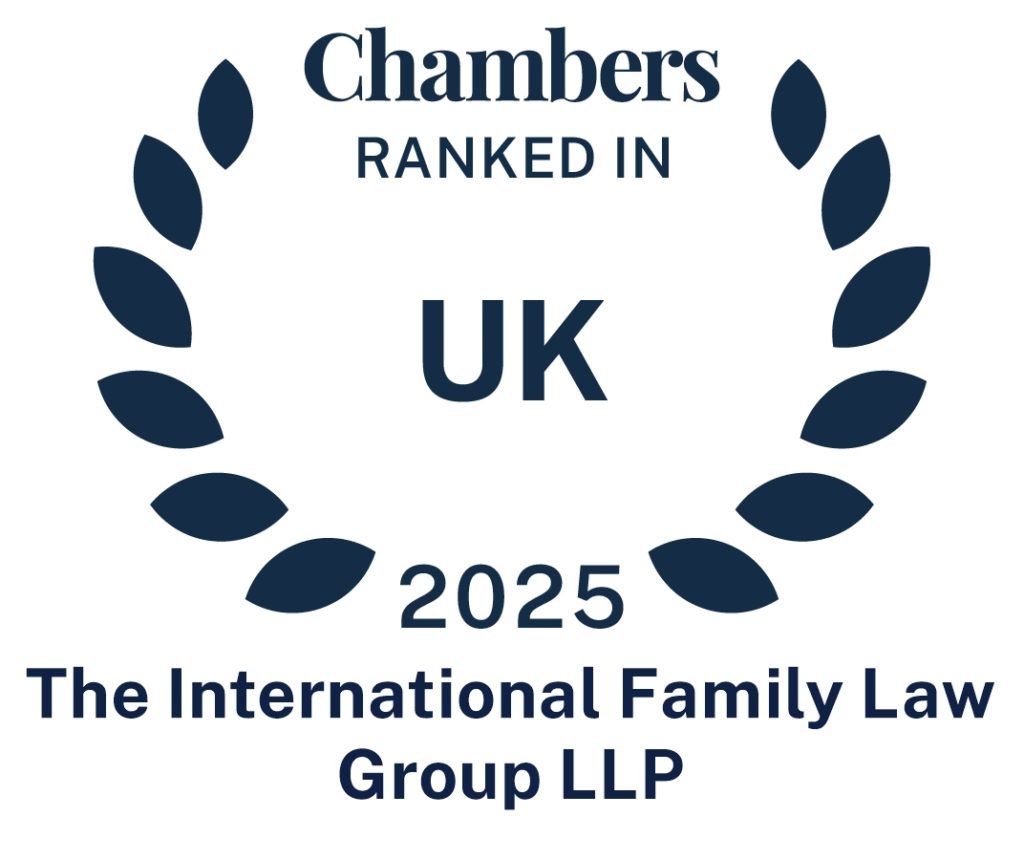‘In the battle between the parents, both children risk being run over by the tanks.’ Those were the words used by a deputy High Court judge at the outset of his final judgment[1] in an eye-wateringly lengthy private children matter. There, the judge was tasked with determining a depressingly regular state of affairs: a disheartening mix of allegations and cross-allegations, suggestions of alienation, repeated applications to vary final orders, a revolving door of professionals – and ultimately, children becoming utterly lost in the melee. Judges, social workers and practitioners alike are all too often thrown into the unenviable position of making judgement calls in finely balanced and life-changing decisions; with children being caught in the crossfire.
It may not come as a huge surprise therefore that one of the most common refrains that lawyers representing children will hear from their clients is ‘I feel that no one is listening to me’. As the tanks of litigation are deployed by each parent, the weapons risk quashing the wishes and feelings of the children involved. The welfare checklist will not be new to any family practitioner of course, and trite as it may sound, in any welfare dispute, the court is obliged to consider a child’s wishes and feelings in light of their age and maturity. However, what a court does with those wishes and feelings can vary wildly from case to case – even where their wishes can seem against their best interests.
The High Court and Court of Appeal have repeatedly had to grasp the thorny issue of how much weight is applied to the child’s wishes in each case. Take, for example, S v S (Relocation) [2017] EWHC 2345 (Fam), [2018] 1 FLR 825; a decision of Mr. Justice Peter Jackson (as he then was), in which a 15-year-old and 13-year-old had obtained their own representation in the midst of their parents’ battle to relocate abroad permanently. Given their ages, the Judge highlighted that respecting their wishes was an important element of their welfare. That in and of itself is hardly news of course; but of particular note is the judge’s approach to young people being free, in essence, to make mistakes or to adopt unwise positions. Specifically:
‘those wishes and feelings are a very important element in their welfare. That is so even if the wishes and feelings are unwise. There is nothing in the law that says that the wishes and feelings of older children should be wise or reasonable. They may be foolish, or immature but respecting children’s points of view must, in the case of older children, accept to some extent the risk of them making mistakes. Unless the consequences of mistaken choices are profoundly harmful, the court cannot protect older children from every mistake that they may make.’ (S v S)
At first blush, that could perhaps seem counterintuitive; how does the principle of letting young people adopt unwise or mistaken positions reconcile with the court’s duty to consider a child’s welfare as its paramount consideration? The phrasing of ‘profoundly harmful’ does seem a high hurdle to cross.
Parental alienation cases
See too a further, more extreme example in the case of Warwickshire County Council v The mother and others [2022] EWHC 2146 (Fam). This was a decision of Mrs Justice Lieven in which the degree of parental alienation and implacable hostility demonstrated by a 12- and a 10-year-old had spiralled to such an extent that the matter was propelled from the private law arena into full-blown care proceedings. In her detailed judgment, Mrs Justice Lieven chronicles the exhaustive trials and tribulations of the courts and various professionals in reuniting the children with their father, culminating in an interim care order being made to remove the children in question from their alienating mother. Serious findings had been made against the mother for her work in alienating the children, including a finding of ‘emotional abuse’ and that the mother had ‘preferred to hide behind the expressed views of the children rather than challenging those views and working with the professionals to correct the false narrative.’ A careful, detailed plan for their reunification with their father had been put in place.
Fast forward several months, and the child’s placement in care was breaking down – to the extent where the judge was faced with an application for the child to return to her mother, in line with the elder child’s fervently held wish. On one view, the person responsible for the alienation and placing the child in this invidious position was now seeking to benefit from her work. In her judgment, Mrs Justice Lieven referred in great detail to the law concerning parental alienation from the Court of Appeal, commenting on the serious approach that the Court must adopt to these cases before it is too late, and specifically, the emotionally abusive nature of alienation. Ultimately however, the alienator got what she wanted, and the child’s return to the mother was ordered.
Here, ‘welfare’ and ‘wishes and feelings’ seem uneasy bedfellows. The two children, found to be subject to emotional abuse, were being sent back to the abusive parent. ‘Profound harm’, as conveyed by Jackson J in the case above, is perhaps on the table. One could imagine scenarios of other types of abuse in which a return to the malevolent parent would be completely out of the question. Similarly, in this case, it could have been all too easy to sound the alienation alarm and cast wishes aside. Whilst this quasi-care private law case and the previous relocation matters are plainly not one and the same, the child’s welfare remains the court’s paramount consideration in each.
Here, however, wishes and feelings had become inextricably linked with the child’s welfare. The judge determines this enormously taxing issue with, if I may say, the utmost sensitivity and care, holding as follows:
‘I appreciate Peter Jackson LJ’s words that this situation calls for judicial resolve because the line of least resistance is likely to be less stressful for the child and the court in the short term. But it does not represent a solution to the problem. I accept this Court might be accused of lack of resolve. However, in some cases there is no solution to a problem, only a choice between two not good outcomes, and the need to choose the least worst outcome. What might be characterized as choosing the course which is less stressful for the child could alternatively be described as taking into account and giving appropriate weight to the child’s wishes and feelings.’
Further:
‘It may well be that in years to come [the elder child] will appreciate the harm the mother has caused her and seek to re-establish a relationship with the father. However, I do not consider the current care plan likely to achieve that objective.’
Alienation cases can hardly be said to be run of the mill by any stretch; they are tremendously complex welfare decisions which are, by their very nature, enmeshed with a complex analysis of a child’s view. Judges are ultimately battling between competing positions, extensive professional involvement, ugly allegations, and distorted wishes and feelings.
Contrast the above with a separate further judgment from Mr Justice Jackson, once again determining a relocation case in Re A (Letter to a Young Person) [2017] EWFC 48. In a unique published letter from the judge to a 14-year-old at the centre of the dispute, the judge ultimately refused permission to relocate, notwithstanding the child’s ardent wish to move. In doing so, and noting the influence one parent had over the young person in question, the judge wrote as follows:
‘I realise that this order is not the one that you said you wanted me to make, but I am confident that it is the right order for you in the long run. Whatever each of your parents might think about it, I hope they have the dignity not to impose their views on you, so that you can work things out for yourself. I know that as you get older, you will do this increasingly and I hope that you will come to see why I have made these decisions.’
As such, strong wishes and feelings do not dictate the case; it is not all a foregone conclusion.
Unpicking a final order
Consider once again the parents and their metaphorical tanks. The ‘wargames’ continue all the way to final hearing, and the court takes into account all factors as it must. Due regard is placed on a child’s wishes and feelings. An order is made, and the parents and children all have finality. The chapter in that family’s history closes, regimented in no small way by a court order. But then what?
A further recent matter has brought into sharp focus how the views of children can make a real difference to an outcome of the case, but crucially, following the making of a final order. In Re: A and B (Rescission of Order: Change of Circumstances) [2021] EWFC 76, [2022] 1 FLR 1143, the children acted as applicants, seeking for a significant change of an order after it had been made. For children to unpick a final order after it has been sealed does raise issues that strike at the heart of welfare and wishes and feelings.
The matter of A and B concerned two Spanish children who are currently residing in Spain, aged 17 (‘A’) and 12 (‘B’). Their Father is Belgian and lives in Spain; their mother is Spanish and lives in the UK. Following the breakdown of the parties’ relationship when in England, divorce and children proceedings were commenced. A final child arrangements order was made which provided for the children to live with their mother in London.
In 2019, ‘A’ and ‘B’ had travelled with Spain with their mother to visit their maternal grandmother. It was during this trip that ‘A’ had a ‘serious argument’ with her mother and had fled her care. ‘A’ came to the attention of the Spanish authorities, and she was placed in institutional care. A subsequent Valencian court order made provision for ‘A’ to be placed temporarily in her father’s care in Madrid, where she has remained since. Her brother, ‘B’, then returned to England in his mother’s care.
Rather than issue proceedings under the 1980 Hague Convention, the mother instead issued Children Act proceedings in England for A’s return. This application came before HHJ Wright who made an order declaring that ‘A’ was habitually resident in England and ordered her return. ‘A’ was not returned.
Later, in April 2020, ‘B’ was in Spain with his mother on holiday when he telephoned his father, alleging that he had been assaulted by his mother. Local police became involved, and ‘B’ was moved into the care of the father.
The father then commenced further litigation in Spain; in July 2020, the Appeal Court of Valencia ordered the return of ‘A’ to the mother and to England; the Spanish Court subsequently ruled that ‘B’ should also be returned to the care of the mother.
Later that year, in October 2020, the children were seen by a judicial examiner who reported that the children wished to remain living in Spain. The Father was then successful in his renewed application for provisional measures to educate ‘B’ in Spain for the academic year 2020/21, and he was granted provisional custody of ‘B’. In November 2020, the father was also awarded a provisional order to arrange schooling for ‘A’ in Spain.
The mother then returned to England alone and issued a Specific Issue Order application in the Central Family Court seeking the return of the children from Spain. The matter was heard on 23 December 2020. At a directions hearing, HHJ Wright made findings that the children had been unlawfully retained by the father in Spain, that the retention continued, and that the children were habitually resident in England and Wales. The judge also ordered the children should be returned forthwith and in any event by 28 December 2020.
The father’s subsequent appeal of the Court of Appeal was unsuccessful, and the return order remained in force.
Through their solicitor, ‘A’ and ‘B’ later made applications in the High Court under Part 18, seeking to rescind or vary the order of HHJ Wright, pursuant to the seldom-used provision under s 31F of the Matrimonial and Family Proceedings Act 1984. That provision reads as follows:
‘(6) The family court has power to vary, suspend, rescind, or revive any order made by it, including:
(a) power to rescind an order and re-list the application on which it was made,
(b) power to replace an order which for any reason appears to be invalid by another which the court has power to make, and
(c) power to vary an order with effect from when it was originally made.’
Sitting in the Family Court, Mr Justice Cobb conducted a detailed assessment of the law in relation to rescission or variation of family court orders at paras 27 – 39 of his judgment, identifying this as being a rare application of rescission of a Family Court order under s 31F of the Matrimonial and Family Proceedings Act 1984. The fact that this application was brought by the children themselves following Children Act proceedings was even more striking. The judge held:
‘Section 31F(6) of the 1984 Act [6] is most likely to be deployed in a children’s case where the relief sought is rescission of an earlier order (as here) the Family Court has wide powers under the CA1989 to vary or indeed discharge its own order where it can be demonstrated that the circumstances have changed, and the interests of the child require variation or discharge of the court-ordered arrangements’
The children’s case was that there had been a material change of circumstances since the order of HHJ Wright on the basis of:
- Their views having hardened on returning to England since December 2020 and this in itself being a material ‘change of circumstances’.
- It being unconscionable to uphold the order for ‘A’’s return to this country (given her age of 17) and on that basis, that the separation of siblings was a real possibility which was not considered by the trial judge.
Both ‘A’ and ‘B’’s views were before the Court by way of the evidence of their solicitor. Mr Justice Cobb confirmed that the court’s task was to ‘consider whether the articulation of these strongly held views can, in this case, be said to represent a ‘change in circumstances’ since December 2020’[8] . In assessing this, the judge noted a palpable closeness between the children and a real risk of separation. The judge also commented ‘The validity of their views on the prospect of return was enhanced in my judgement by the fact that their views contained balance: they spoke positively of aspects of their mother and were not uncritical of their father.’
However, it was the assessment of the hardening of views which was essential to the children’s application. The judge held:
‘can the hardening of the views of subject children post-hearing represent a change of circumstances such as to justify the deployment of section 31F(6)? The short answer is, in my judgment, yes; and particularly so where the more recently expressed views not only materially challenge the earlier ordered outcome, but also strike (as may be the case here) at the very foundation of the Family Court’s jurisdiction to make the order at all.’ (emphasis added)
Mr Justice Cobb found it extremely difficult to assess their views and whether they had sufficiently hardened since HHJ Wright’s decision as there was no clear assessment of this contained within HHJ Wright’s judgment. Mr Justice Cobb did however find that the ‘dynamic of the case’ had changed such that given ‘A’’s very clear views, there was a real prospect of sibling separation. This was not something which HHJ Wright contemplated on the evidence at that time. The return orders were therefore rescinded.
As such, the position of wishes and feelings is much more nuanced than it appears; above and beyond the universal truth that each case turns on its facts, for a court to ignore the voice of a child is beyond risky. Any assessment of wishes and feelings engages not only complex issues of facts, but also ‘least worst’ outcomes, and competing versions of how to interpret and balance the welfare checklist. A voice in proceedings is not a veto, yet it is also plainly not valueless – and even post final order, views can morph or harden. By opening the door to court, parents and practitioners alike must be braced for an element of uncertainty compounded by the intricate issue of wishes and feelings; and ultimately, a far more reliable route may well lie in parental agreements and mediation outside of the court arena.
James Netto
[email protected]
The International Family Law Group LLP
www.iflg.uk.com
© May 2023
Citation
[1] JD & Anor v VB & Ors [2020] EWFC 16
- James Nettohttps://iflg.uk.com/team/james-netto
- James Nettohttps://iflg.uk.com/team/james-netto
- James Nettohttps://iflg.uk.com/team/james-netto
- James Nettohttps://iflg.uk.com/team/james-netto











